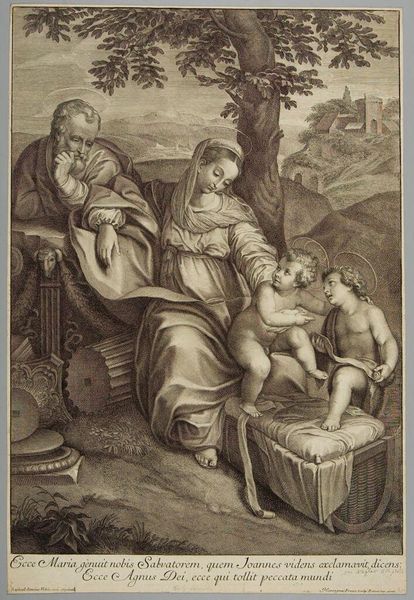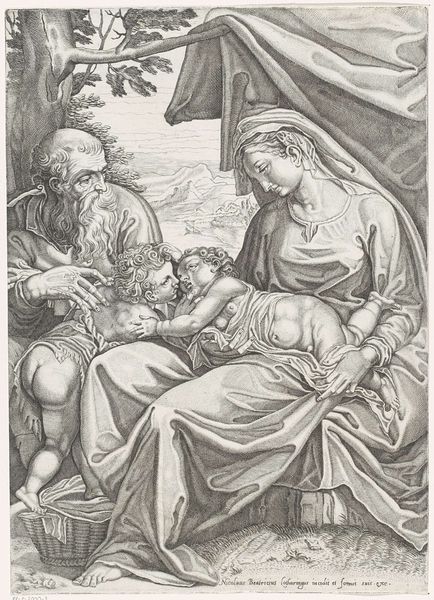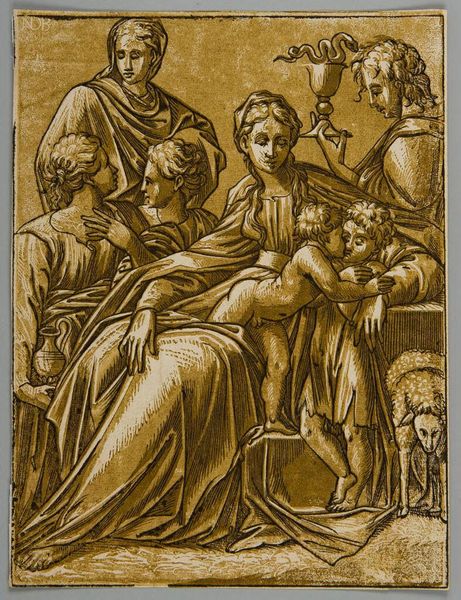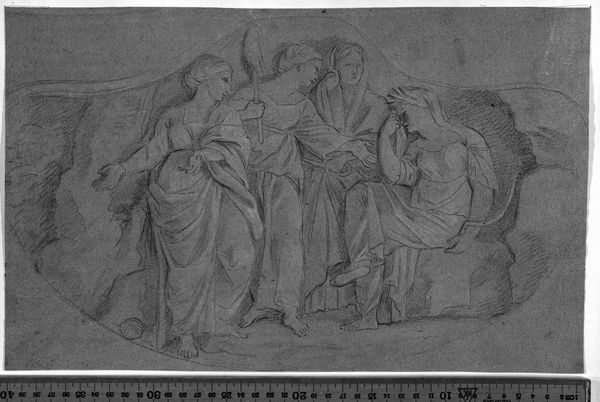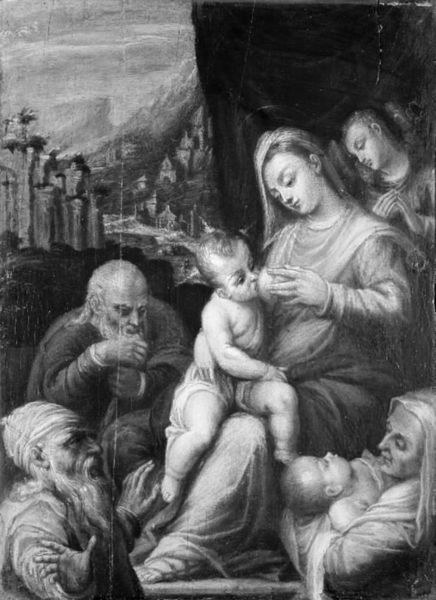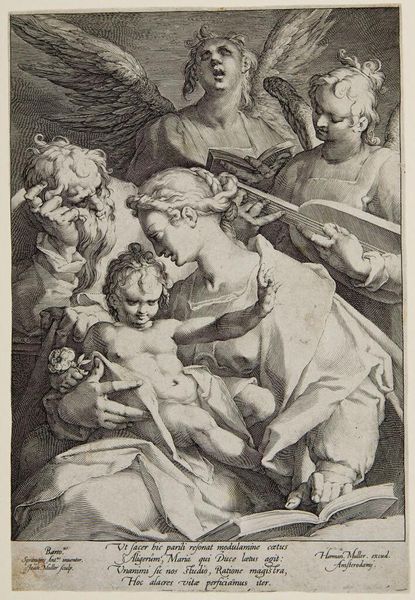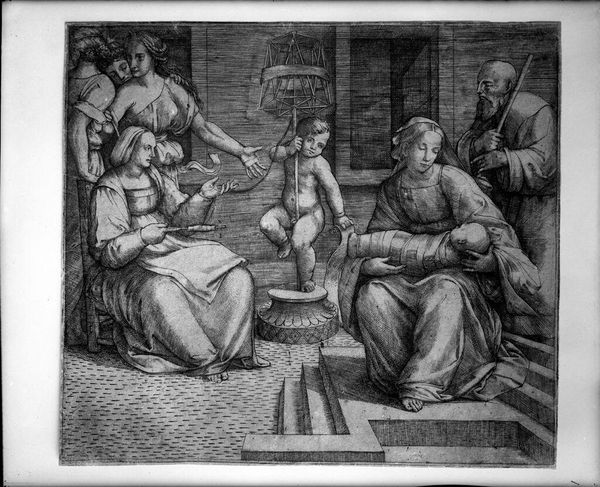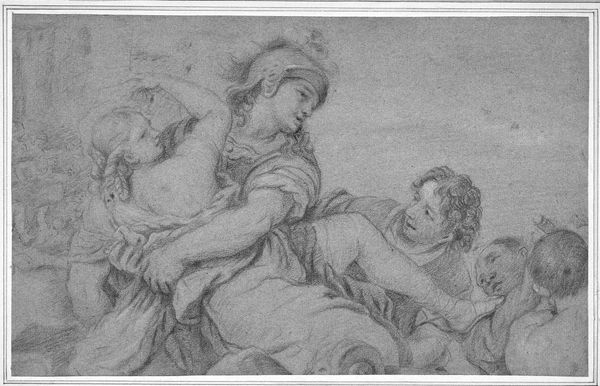
relief, sculpture, marble
#
neoclacissism
#
allegory
#
sculpture
#
relief
#
classical-realism
#
figuration
#
sculpture
#
group-portraits
#
decorative-art
#
marble
Dimensions: Overall: 19 7/8 × 23 7/8 in. (50.5 × 60.6 cm)
Copyright: Public Domain
Editor: We're looking at "Mother and Children," a marble relief made between 1770 and 1790 by Piat Joseph Sauvage. It's at the Metropolitan Museum of Art. It looks very… neoclassical, very posed and idealized. What strikes you about this work? Curator: The first thing that seizes my attention is the relief’s structural dynamism, achieved via the artist’s mastery of texture. Notice the contrast between the smooth, almost porcelain-like skin of the figures, versus the intricate drapery of their garments. It's through these juxtapositions that the artist establishes depth, manipulating light and shadow to give a three-dimensional presence, while maintaining the constraints of the medium. Observe, too, how the lines create an architecture for the composition—the verticality of the background sculpture balancing the horizontality of the maternal scene. Does the structure generate an emotional reaction, or is it merely an artifact of formal devices? Editor: I see what you mean about the textures. It’s interesting how much detail he managed to get in the folds of the clothing, considering it’s a relief. Do you think the idealized figures detract from the emotion? Curator: The figures represent an aspiration towards classical ideals. To regard it as emotional or unaffecting, do we seek expressive individualism, or generalized harmony? Look, if we judge solely from its mimetic fidelity to real human emotion, perhaps this sculpture may seem stilted. However, its aesthetic merit arises precisely from its conscious manipulation of forms toward the expression of higher order principles of beauty and balance. How then does this piece speak, or not, to modern viewers? Editor: I guess I see that it’s aiming for a kind of universal ideal, rather than a snapshot of real life. It makes me appreciate the technical skill even more, thinking about what Sauvage was trying to achieve within the conventions of the time. Curator: Indeed. Considering the interplay of form, material, and ideal in artistic output not only provides understanding of historical production but enhances our assessment of artistic objectives beyond mere representation. A deeper experience, wouldn't you agree?
Comments
No comments
Be the first to comment and join the conversation on the ultimate creative platform.
